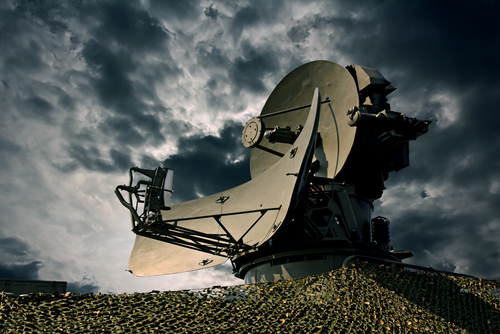When people think of warfare, they usually imagine situations wherein soldiers attack each other with guns, bombs, tanks, and other military weapons, firearms, and vehicles. However, while this type of warfare still exists nowadays, many military units have moved on to a different kind of battle: electronic warfare.
What Is It?
Electronic warfare or EW refers to any action that involves the use of the electromagnetic spectrum or any other kind of directed energy to attack an enemy or defend oneself. The process normally uses radio waves as well as laser light, and specific activities can involve confusing the enemy’s electronics systems and disabling their equipment.
“Listening” to the enemy is also important in electronic warfare; with the right equipment, military units can zone in on the enemy’s radio signals and gather important information. In this scenario, it’s clear that electronic warfare is the modern-day equivalent of intercepting runners and carrier pigeons.
Defense is likewise an essential factor. By using the right techniques, the military can prevent electronic attacks from enemies and make sure they have stable, unimpeded access to the electromagnetic spectrum. This, in turn, ensures that they always have reliable communications and that they can quickly and easily share information with their troops. EW methods can even help detect an incoming missile as early as possible and give military units enough time to take the right steps and minimize loss of life or property.
Electronic warfare has become increasingly important in the recent years. As the military becomes more reliant on communications that are based on the electromagnetic spectrum, they have an increased need to protect their communications system from their opponents as well as more opportunities to interfere with enemy communications.
Digital Frequency Discriminators in EW
Numerous types of equipment are needed to make electronic warfare a reality, and one of these is the digital frequency discriminator or DFD. This device is used along with an instantaneous-frequency-measurement receiver (or IFM receiver) to determine the frequency of the signals obtained from the enemy. Knowing this is important since it allows military units to determine the frequency they should use to confuse or disable the enemy’s communications system.
- Digital frequency discriminators are built with microwave mixer-based correlators at their front end. These correlators take the incoming signal and convert it into voltage that is equivalent to the frequency of the incoming signal. This voltage is then processed by the analog-to-digital converter that’s found in the IFM receiver. The receiver uses dedicated software to make calculations and determine the frequency of the incoming signal as well as its amplitude, time of arrival, and pulse width. Most DFDs and IFM receivers can process signals that fall between the 0.5 to 18.0 GHz bandwidths. WideBand Systems’ and Akon Inc. Digital Frequency Discriminators (DFD’s) are integrated microwave/video/digital assemblies which provide digital encoding of wide band RF input signal frequency data for pulsed or CW RF signals. These DFD designs represent the state of the art in the precision measurement of RF frequency, and are the culmination of more than 30 years of incremental design improvements to the basic binary correlator DFD. Both WideBand Systems (0.5 GHz to 18 GHz DFD) and Akon Inc. (4.3 to 5.3 GHz DFD) are state of the art DFD’s are used in mission sensitive applications around the world.
Contact Us Today
It’s important to note that a wide range of digital frequency discriminators and IFM receivers are available nowadays. This means that clients who want to buy these products should have a deep understanding of their specs and have enough time to browse through dozens of hardware options.
If you need help with buying the right DFD and IFM receiver, simply get in touch with Peninsula Technical Sales at sales@pentech.com or call us at 650-965-3636. We welcome you to visit our web site. We have the engineering knowledge to help you select the right equipment for your needs, and we can point you to the best options on the market.
Peninsula Technical Sales represents electronic equipment manufacturers and is proud to offer our services online and to the following cities and their surrounding areas: San Francisco, Santa Clara, San Jose, Fremont, Sacramento, Milpitas, and Santa Rosa.

